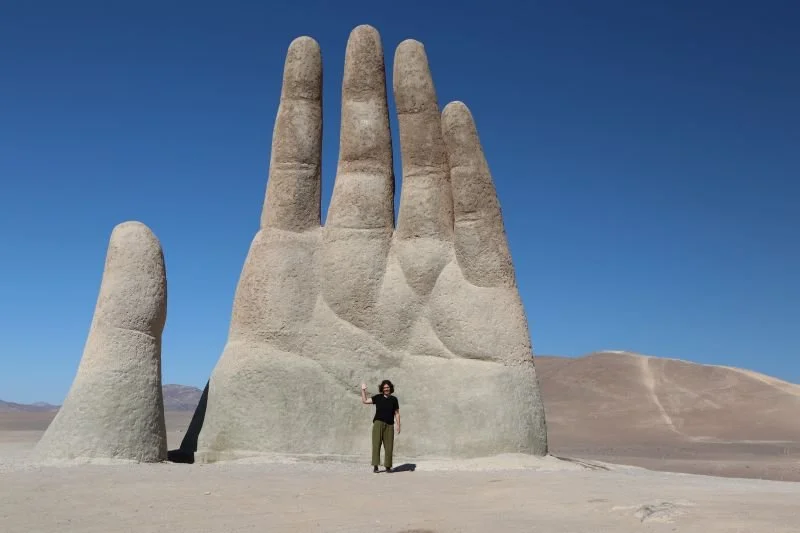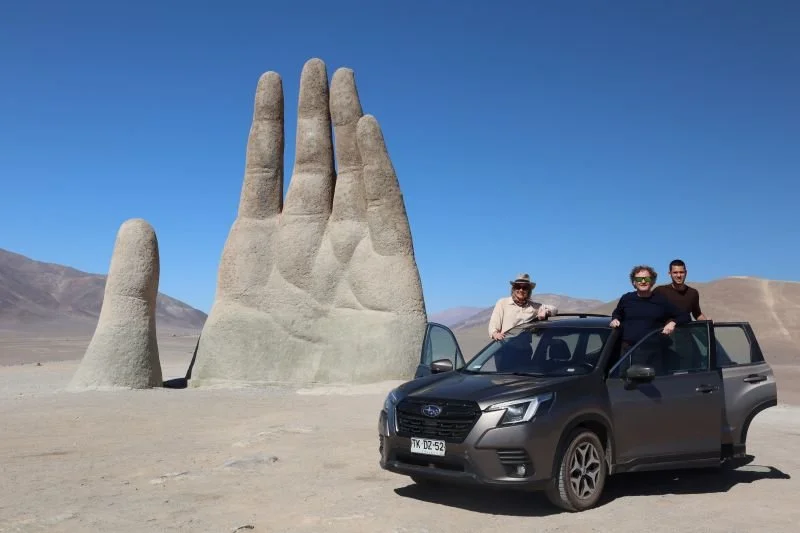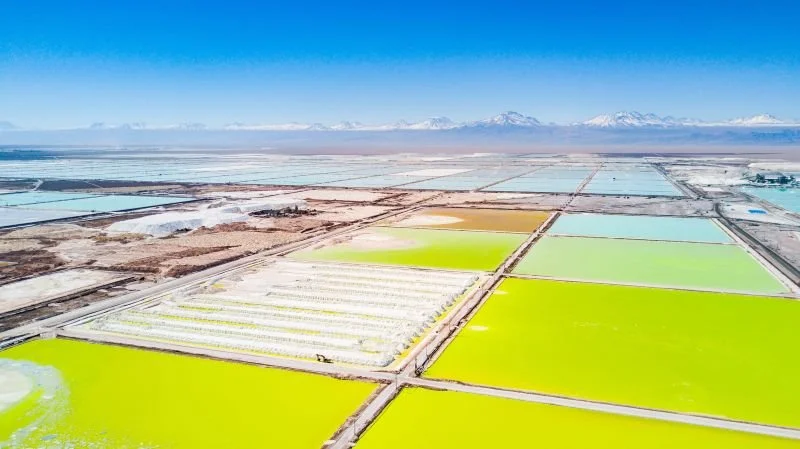Heavy industry and rich minerals
This blog covers what I learned about the Atacama Desert and what makes it so interesting, unique and special. It is the driest non-polar desert on the planet and has been arid for at least 150 million years, which produces a unique landscape.
The Atacama Desert is a high desert; it has altitudes ranging from near sea level to over 6,500 metres, with the average altitude being about 2,500 metres. The soil in this part of the world is very similar to that on Mars. NASA test the instruments that will go on missions to Mars in the Atacama Desert. It has also been used as a film location for movies set in space.







A place full of minerals and mining
Although a desert looks barren, this desert is full of minerals like sodium nitrate, copper and lithium. These minerals are mined by several different mining industries in the desert. While we were in the town of Antofagasta, we got to see some of the lithium mining an extraction. In the mines they had pools which helps them extract the lithium which was a florescent green like the colour of a highlighter pen, that looked quite unnatural. Chile holds around 33% of global lithium reserves and is the second-largest producer of lithium, after Australia who produces 50% to 55% world's lithium output.
Copper mining also plays a crucial role in the Atacama Desert's economy and stands as a key pillar of Chile's financial strength, with the nation leading the world as the top exporter of copper. Chile produces 40% of global copper production and is home to the largest copper deposits in the world.
Sustainability and mining
The contrast between empty spaces and heavy industrial areas was quite stark. We might drive for a hundred kilometres feeling like we were the only people on the planet, then cross a ridge into another valley where we were suddenly surrounded by enormous mineral processing plants that seemed to stretch on forever; hundreds of heavy trucks including, tankers full of sulphuric acid (used for copper extraction), and huge digging and earthmoving equipment. Truly a land where the primary minerals are being ripped from the Earth’s surface at great speed with very large financial investment.
Now I am interested in sustainability and the environmental impact of things, but the reality is there is mining going on and our lives would be very different if these resources were not mined. When we were driving through the desert, we were able to see some massive open pit mines. Part of me was amazed at the sheer size of these mines. The other part of me questioned how does this affect the environment and eco systems.
I can see both points of view when it comes to mining minerals such as lithium and copper. They are minerals that are incredibly important in the transition to renewable energy. I don’t know about you but I don’t think we want to live like hunter gatherers until we have found 100% sustainable options. In my research I found out that at the moment, lithium and copper are some of the minerals that are going to help us build a more sustainable future even if that means that the way we extract them now is not the most environmentally friendly yet. I think that eventually someone will figure out a more environmentally friendly way for extracting these minerals.
Lithium
Lithium requires a significant amount of water usage, and the mining of lithium can lead to habitat disruption and land degradation. It has a lot of greenhouse gas emissions in almost every step of the proses. The process can create air and water pollution which impacts the whole ecosystem as well as the high energy consumption it takes to mine and process lithium. Improper disposal of a lithium battery can also impact the environment.
But it is not all doom and gloom. Lithium can help support the clean energy transition and lithium batteries are improving their energy storage efficiency. There is also recycling potential for these batteries.
Copper
Copper mining is not environmentally friendly because of the same reasons as lithium but once copper is out of the ground it is 100% recyclable and sustainable. It is also a crucial part of renewable energy systems, such as solar panels and wind turbines.
Other things we have seen in the desert
Okay, enough about the Atacama Desert’s industry. While in San Pedro de Atacama we visited the Valle de la Luna (the Valley of the Moon) since it was near the city. It was an incredible desert landscape like nothing I had seen before.
We visited a sculptor of a giant hand called “the Hand of the Desert” in the middle of the desert located about 75 kilometres north-west of the city of Antofagasta. The sculpture was created by the Chilean artist and sculptor Mario Irarrázabal in 1992. The concept behind the giant hand reaching for the skies speaks to human loneliness, torment, and fragility. We were in more upbeat spirits when we visited the Hand and got to take some cool photos in this location. We also used this remote location to conduct nighttime astrophotography – if you think the desert is impressive, wait until we look up—because next, we dive into the cosmos!

